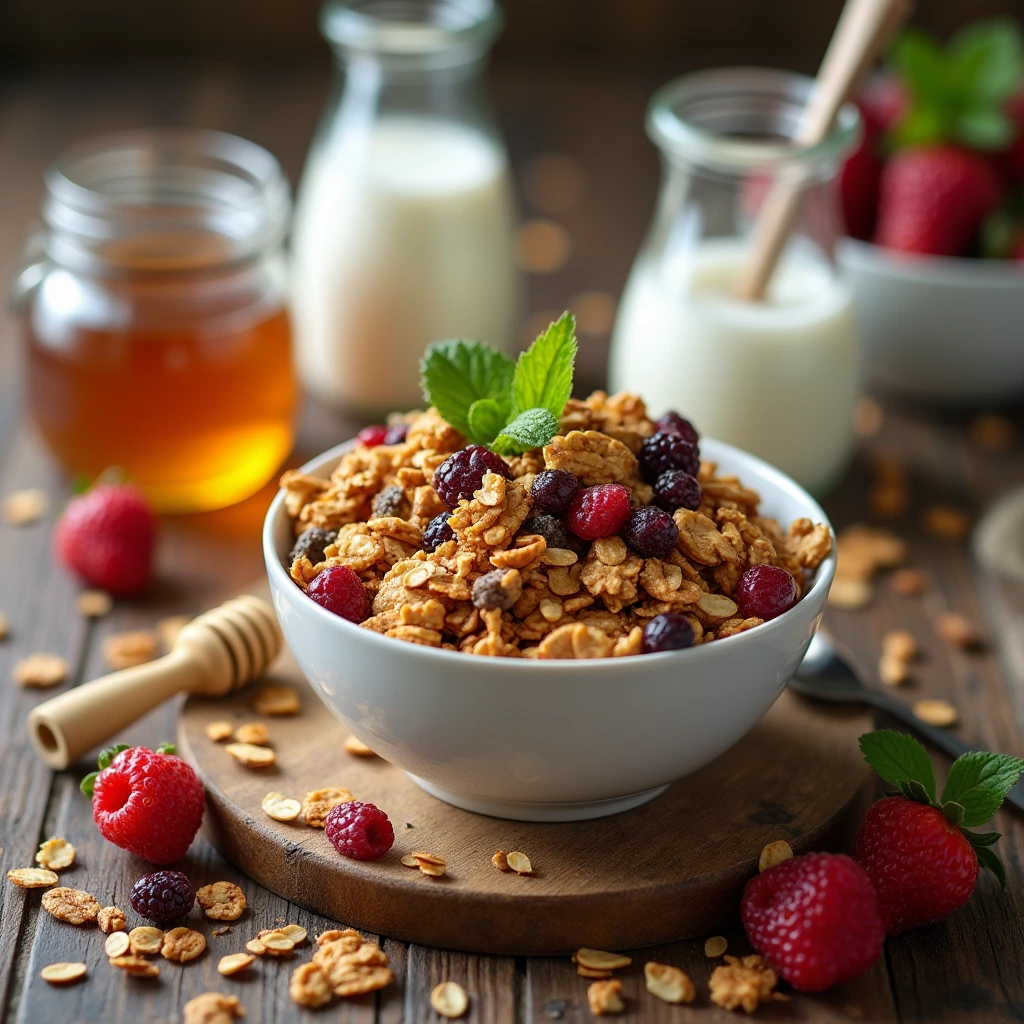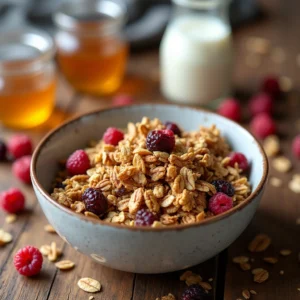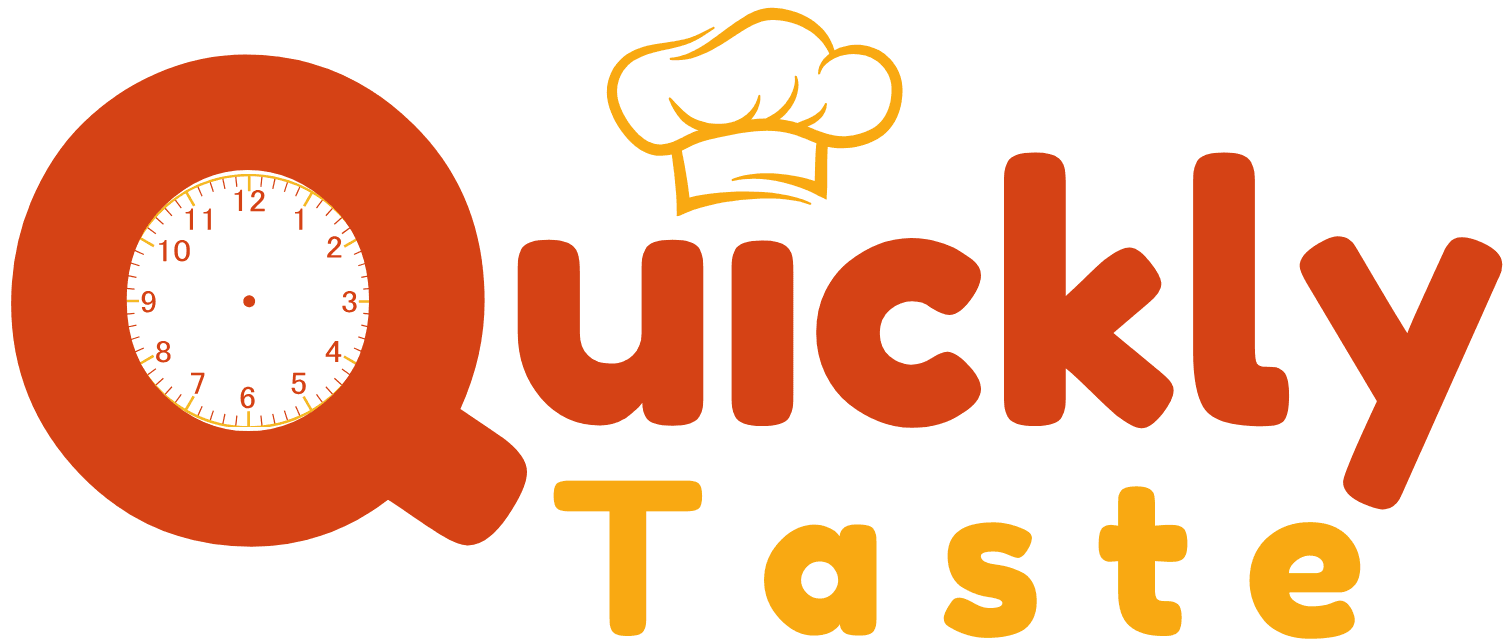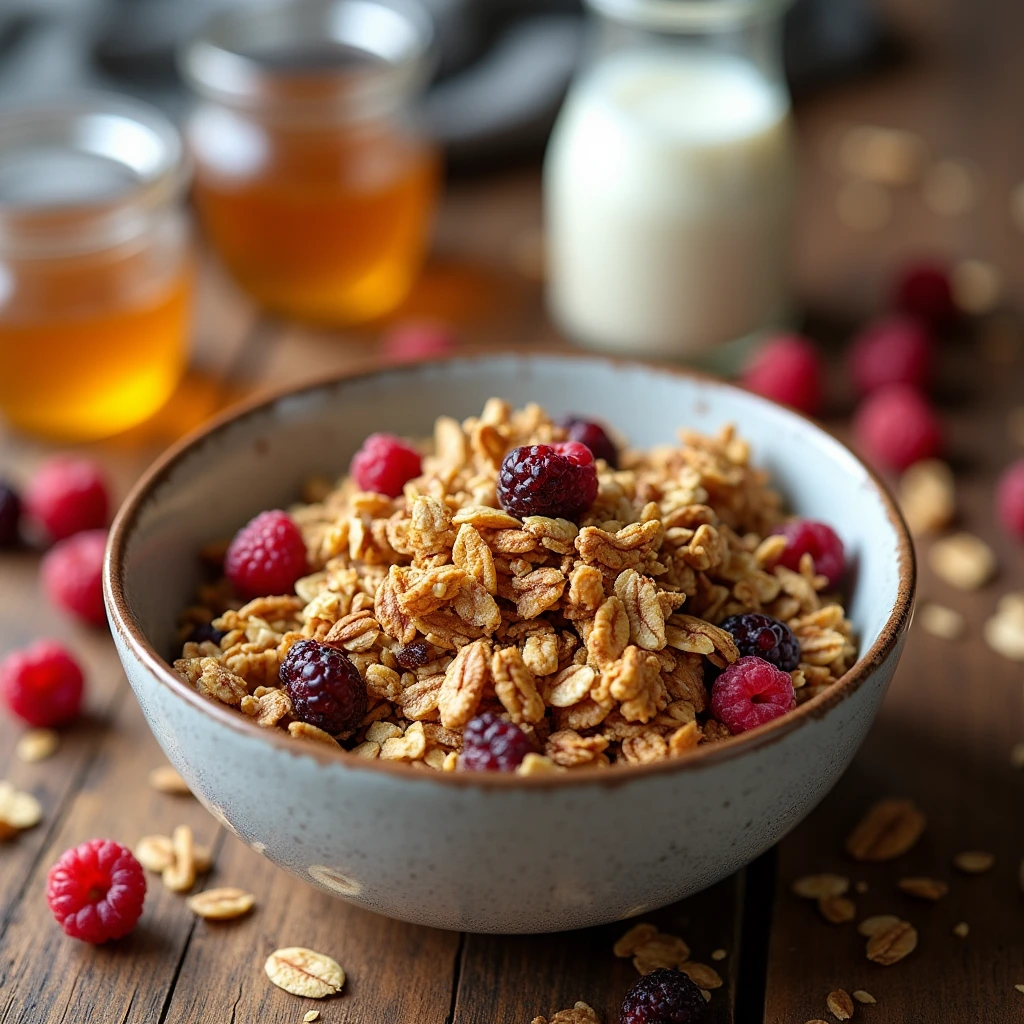Granola is a favorite for breakfast and snacks. People love it for its crunch, great taste, and flexibility. However, if you’re avoiding gluten, finding safe granola at the store can be tricky. Many brands use oats processed with wheat or add ingredients that contain gluten. Fortunately, making gluten-free granola at home is easy, budget-friendly, and lets you control what you eat. In this guide, you’ll discover a quick, tasty, and healthy recipe. It’s perfect for a filling breakfast or a snack on the go.

Ingredients for Gluten-Free Granola
To start, you’ll need the right ingredients—especially oats. Not all oats are gluten-free. Therefore, it’s very important to use certified gluten-free oats. These oats are processed in dedicated facilities to avoid any contact with wheat. Along with oats, you’ll add nuts, seeds, a natural sweetener, and oil to help the mixture bake well and turn crispy.
Here’s what you need:
- 3 cups certified gluten-free rolled oats
- 1 cup chopped nuts (such as almonds, walnuts, or pecans)
- ½ cup seeds (like pumpkin or sunflower seeds)
- ¼ cup coconut oil (or other neutral oil)
- ⅓ cup honey or maple syrup
- 1 teaspoon vanilla extract
- 1 teaspoon cinnamon
- ½ cup dried fruits (raisins, cranberries, or apricots)
Before you begin, check all labels to make sure ingredients are truly gluten-free. For example, some dried fruits are coated with flour to prevent sticking. If you want a nut-free version, simply use more seeds or puffed grains instead. This recipe is easy to change, so you can make it your own.
How to Make Gluten-Free Granola
- Step 1:
Preheat your oven to 325°F (160°C). Line a baking sheet with parchment paper. This step prevents sticking and makes cleanup easier.
- Step 2:
mix the dry ingredients in a large bowl—oats, nuts, seeds, cinnamon, and a pinch of salt. Then, in another bowl, combine the coconut oil, honey or maple syrup, and vanilla extract. Stir well until smooth. After that, pour the wet mix over the dry ingredients. Stir everything so that the mixture is evenly coated.
- Step 3:
Spread the mixture onto the baking sheet in a thin, even layer. For chunkier granola, press it down gently with a spatula. Bake for 20–25 minutes. Make sure to stir halfway through to prevent burning and allow even baking. Watch it closely near the end—it can burn quickly.
- Step 4:
Once the granola turns golden brown, take it out of the oven and let it cool fully. This step helps it become crisp. After cooling, mix in dried fruits or extras like chocolate chips or coconut flakes. Then, store the granola in an airtight container. It stays fresh for up to two weeks at room temperature. If you want to keep it longer, freeze it in a sealed bag or container.
Customization Ideas for Your Granola
One of the best things about homemade granola is the freedom to create flavors you love. For instance, add cocoa powder to the mix and toss in chocolate chunks after baking for a rich treat. Want tropical flair? Include dried pineapple, coconut flakes, and macadamia nuts. You can also make a savory version. Simply skip the sweetener and add spices like paprika or rosemary with extra seeds.
You can change the recipe to fit your needs. Use maple syrup instead of honey for a vegan option. Avoiding nuts? Just use seeds instead. Cutting sugar? Try mashed bananas or unsweetened applesauce for sweetness.
There are many ways to enjoy your granola. Serve it with yogurt, pour it over smoothie bowls, or eat it plain as a crunchy snack. You can also use it to top oatmeal or ice cream.
Frequently Asked Questions
Yes, granola can be gluten-free if you use the right ingredients. Most importantly, choose certified gluten-free oats and check all other items for hidden gluten. Some store-bought granola contains gluten or is processed with wheat. Making your own is the safest way to ensure it’s gluten-free.
Some Nature Valley granola products do contain gluten. Although they offer a few gluten-free options, many of their items are made with oats that may touch wheat during processing. Always read the label and look for a “gluten-free” tag. If it’s not there, the product likely has gluten or risks cross-contact.
Yes, Trader Joe’s sells several gluten-free granola options. These products use certified gluten-free oats and are clearly labeled. However, product availability can change. Therefore, it’s a good idea to check the packaging each time before you buy.
Kind offers many gluten-free granola products. They use certified gluten-free oats and label their products accordingly. That said, each flavor might have different ingredients, so it’s best to read the label, especially if you are highly sensitive to gluten.
Let’s try it
In summary, making gluten-free granola at home is simple, quick, and satisfying. You can choose high-quality ingredients, avoid gluten, and adjust the recipe to match your taste. Plus, it’s often cheaper and healthier than store-bought options.
Try this recipe today and explore different mix-ins for unique flavors. Whether you enjoy it for breakfast, as a snack, or on top of your favorite dishes, homemade granola is a smart and tasty choice. Give it a go, and feel free to share your favorite versions in the comments or on social media!
More
For more gluten-free recipe inspiration, check out our Gluten-Free Granola post, which offers another take on creating delicious, healthy granola at home. You might also enjoy our refreshing Greek Yogurt Smoothie recipe — a perfect pairing with granola for a wholesome breakfast. If you’re curious about gluten-free baking, don’t miss our Banana Bread Recipe with Oil, which uses simple, gluten-free ingredients. For additional guidance, the Celiac Disease Foundation offers trusted information about gluten-free diets, while Beyond Celiac provides helpful tips and recipes for gluten-sensitive individuals. These resources can help you confidently explore gluten-free living, whether for health reasons or personal choice.

Gluten-Free Granola
Equipment
- Baking Sheet
- Parchment Paper
- Mixing Bowls
Ingredients
Granola Base
- 3 cups certified gluten-free rolled oats
- 1 cup chopped nuts almonds, walnuts, or pecans
- 0.5 cup seeds pumpkin or sunflower
- 0.25 cup coconut oil or other neutral oil
- 0.33 cup honey or maple syrup
- 1 tsp vanilla extract
- 1 tsp cinnamon
- 0.5 cup dried fruits raisins, cranberries, or apricots
Instructions
- Preheat oven to 325°F (160°C) and line a baking sheet with parchment paper.
- In a large bowl, mix oats, chopped nuts, seeds, cinnamon, and a pinch of salt.
- In another bowl, combine coconut oil, honey or maple syrup, and vanilla extract. Mix until smooth.
- Pour wet ingredients into the dry and stir to evenly coat everything.
- Spread the mixture on the baking sheet in an even layer. Press for chunkier granola.
- Bake for 20–25 minutes, stirring halfway through. Let cool completely before adding dried fruits.
- Store in an airtight container at room temperature for up to 2 weeks or freeze for longer storage.

